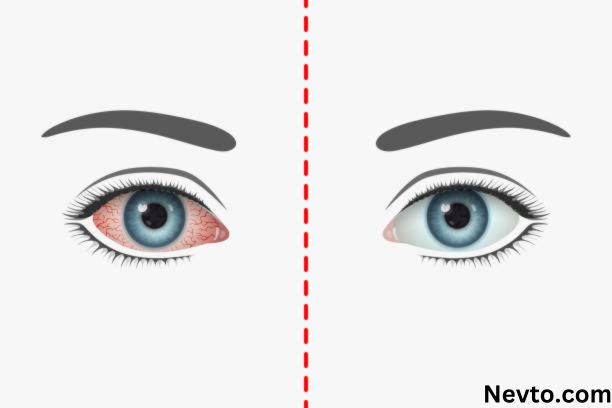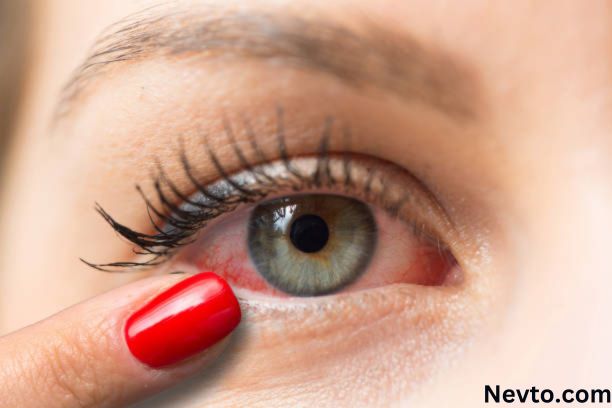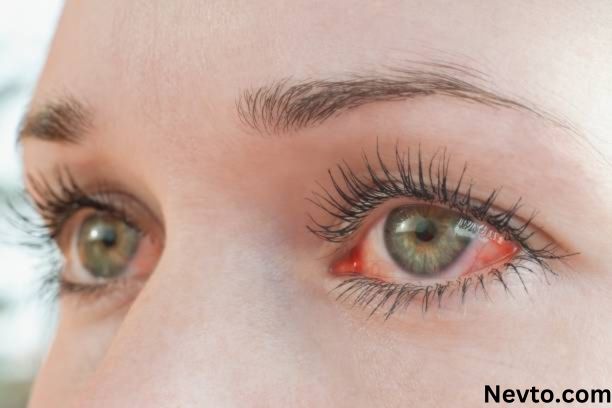What is Commonly Misdiagnosed as Pink Eye?
Pink eye, additionally known medically as conjunctivitis, is an inflammation or infection of the conjunctiva, that is the clean membrane masking the white a part of the eye. It reasons the conjunctiva to end up red, swollen, and often produces discharge. The hallmark signs of purple eye are redness, itching, burning, and discharge from the eyes.
While red eye is frequently because of a bacterial or viral infection, there are numerous conditions that canmimic pink eye signs and symptoms. Some of the most commonplace conditions unsuitable for purple eye encompass:
Table of Contents
Bacterial Infections
Bacterial infections are one of the foremost reasons of pink eye. Staphylococcus aureus and Streptococcus pneumoniae are common bacteria that might infect the conjunctiva.
Bacterial purple eye frequently produces a yellowish, greenish, or whitish discharge. The discharge tends to be thick and might cause the eyelids to stick together, particularly in the morning. Light sensitivity and eye pain also are not unusual.
While bacterial pink eye desires antibiotic remedy, it can appear similar to different types of eye infections and irritation. A proper prognosis from an eye doctor is important to make certain the right remedy.
Allergies
Seasonal allergic reactions can cause allergic conjunctivitis, which ends up in crimson eye-like signs and symptoms. Pollen, pet dander, dirt mites, and other allergens can cause hypersensitivity in the conjunctiva.
Allergic crimson eye typically influences each eye and causes burning, watery eyes, and itching. A clean, watery discharge is commonplace. Light sensitivity, aches, and crusty eyelashes may also arise.
It’s vital to differentiate allergic purple eyes from infectious kinds since allergy eye drops, oral antihistamines, and warding off triggers are the main remedies in preference to antibiotics.
Viral Conjunctivitis
Viral contamination is every other commonplace motive of a purple eye. Viruses like adenovirus account for about 80% of contagious conjunctivitis cases, mainly in kids.
The signs of viral red eye are very similar to bacterial red eye. Redness, discharge, eye irritation, and light sensitivity occur with each.
What sets viral red aside from bacterial is that discharge can be more watery. Viral pink eye also tends to have an effect on one eye first, which then spreads to the opposite. Since antibiotics don’t work towards viruses, successfully diagnosing viral vs bacterial conjunctivitis is important. Read How To Cure Gum Disease Without a Dentist?

Dry Eye Syndrome
Many human beings mistake dry eye syndrome for the crimson eye because it can purpose pink, angry eyes. But at the same time as dry eye and crimson eye proportion some similarities, they’re completely exclusive conditions.
With dry eye syndrome, there is inadequate lubrication of the eyes, leading to inflammation. Symptoms encompass stinging, burning, light sensitivity, and the feeling like something is in your eye. Eyes may also water to start with, after which come to be dry.
Dry eye syndrome is frequently chronic and needs the common use of lubricating eye drops as well as addressing any underlying causes. It isn’t always contagious, like purple eyes.
Contact Lens Issues
Contact lens wearers may broaden contact lens-brought about conjunctivitis, which appears very just like infectious red eye. Wearing contacts too long or overnight, not well cleansing them, or having a sensitivity to contacts can cause touch lens-related eye irritation and irritation.
Symptoms involve crimson, indignant eyes, feeling like something is caught in your eye, excessive watering or discharge, light sensitivity, and blurred vision. Taking out the contacts and giving the eyes a ruin is regularly the primary remedy step.
Bacterial or viral contamination is also more likely in individuals who put on contacts, seeing that contacts can introduce germs into the eyes. So infectious crimson eye constantly wishes dominated out.
Ocular Surface Disease
A group of situations called ocular surface illnesses affect the corneal surface and conjunctiva. Examples consist of blepharitis, keratitis, and ocular rosacea.
Ocular floor disease results in persistent dry eye and eye irritation. Symptoms of inflammation, burning, tearing, redness, blurred imagination and prescient, mild sensitivity, and foreign frame sensation are not unusual.
Since it causes crimson eyes and irritation, ocular surface sickness is every now and then careworn with red eye. Proper eye tests and eye drops that deal with inflammation and dryness are wanted for management instead of antibiotics. Read Active Care Nutrition: The Secret to Achieving Optimal Health and Longevity

Other Eye Conditions
Many different eye conditions like episcleritis, uveitis, and corneal abrasions can all be wrong for red eye given the purple eyes, ache, infection, and mild sensitivity that may arise.
Eye injuries, irritation unrelated to contamination, and autoimmune sickness are just a few of the factors that could masquerade as the infectious purple eye. A scientific assessment via an ophthalmologist is prime for accurate prognosis and focused remedy.
Home Treatment
While waiting for an eye-fixed medical doctor appointment or when you have been diagnosed with purple eye, a few home remedy measures can assist alleviate discomfort. These include:
- Applying cool compresses to indignant eyes
- Using OTC eye drops like artificial tears to lubricate eyes
- Taking over-the-counter ache relievers like acetaminophen or ibuprofen
- Avoiding touching or rubbing your eyes to prevent spreading infection to others or to your second eye
- Practicing good hygiene by washing hands frequently
- Cleaning glasses, towels, pillowcases and not sharing eye makeup to prevent reinfection or spread
- Getting plenty of rest
- Staying home from school or work if recommended by your doctor to allow healing
Seeing an optometrist or ophthalmologist promptly is recommended anytime you experience unexplained red eye, eye discharge, irritation, reduced vision or other worrying eye symptoms. Early diagnosis and any necessary prescription treatment leads to the best outcomes.

Conclusion
Pink eye or conjunctivitis often gets self-diagnosed incorrectly because many problems can mimic red, indignant, runny eyes. Allergic reactions, touch lens overwear, viral and bacterial infections, persistent dry eye, and ocular surface disease are just a few matters that frequently get improper for purple eyes.
Seeing an eye health practitioner for the right exam, accurate prognosis, and tailored remedy plan is constantly exceptional whilst you expand difficult eye symptoms. Leaving pink eye untreated risks worsening infection, damage to the cornea and vision, or spreading illness to others. Getting appropriate medication speeds healing and symptom relief.
Knowing the subtle differences between the many pink-eye look-alikes guides proper self-care while waiting for a medical evaluation. But never try to self-treat red, painful eyes longer than a day or two without being evaluated. Catching any eye condition early optimizes outcomes.
FAQs
What’s the main symptom that differentiates bacterial purple eye from viral?
While both motive redness, inflammation, and discharge, bacterial pink eye discharge is usually yellow, inexperienced, or white and thick even as viral discharge tends to be extra clear and watery.
Is pink eye contagious?
Viral and bacterial conjunctivitis are very contagious and without difficulty spread through contact with eye discharge from a person infected or from touching infected hands or gadgets. Other red eye appearance-alike like hypersensitive reactions and dry eye aren’t contagious.
Can contacts purpose signs that mimic crimson eye?
Yes, overusing contacts or no longer cleaning them well introduces infection and infection causing redness, mild sensitivity, discharge and a feeling like something is caught for your eye mimicking pink eye.
Why should you notice an optometrist for red eyes?
Seeing an optometrist lets in for a complete examination of the eyes to rule out worrisome conditions and decide the exact purpose for redness and inflammation. It also allows getting a prescription remedy to clear up signs faster and prevent ability headaches.
What domestic remedies quickly ease pink eye soreness?
Applying cool compresses, using artificial tear ointments, taking oral pain meds, heading off eye touching/rubbing, keeping good hygiene, cleaning glasses/contacts properly and getting extra relaxation assist relieve purple eye irritation even as anticipating hospital treatment.




